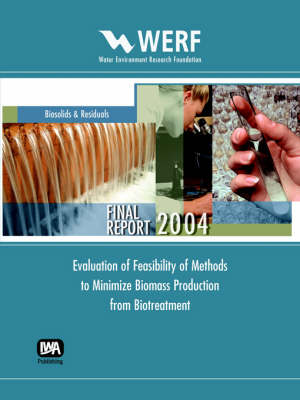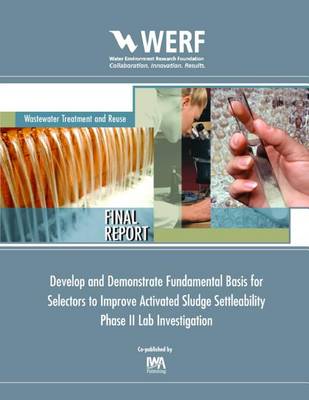WERF Research Report
2 total works
Evaluation of Feasibility of Methods to Minimize Biomass Production from Biotreatment
by H. David Stensel
Published 1 January 2004
This report presents the results of an evaluation of technologies that may result in less biomass production in activated sludge processes. The report summarizes the results of a comprehensive literature review that was done to evaluate technologies in terms of their sludge reduction potential, ease of implementation, impacts on plant operations and effluent quality, reliability, and relative capital and operating costs. Reporting testing results supported significant biomass reduction by processes using chemical and thermal methods, higher life forms (predator processes), anaerobic instead of aerobic respiration, and extreme solids retention times, but biomass reduction for enhanced biological phosphorus removal (EBPR) processes and a mechanical disintegration process were less conclusive. The predator enhancement process showed promise for industrial wastewater treatment, but is less attractive for municipal wastewater treatment for which a lower soluble COD fraction is present. Extreme solids retention time processes may be practical for small wastewater flows and perhaps with the use of membrane separation technology. Anaerobic treatment processes are known to have a lower biomass yield (one fourth or a less than for aerobic treatment), but work is needed to develop their applications for low strength, low temperature wastewaters, such as in municipal wastewater treatment. For some processes such as the cell disruption using mechanical, thermal, and chemical means, the cost of implementing the biomass reduction technology was greater than the cost savings associated with less sludge production. Addition of chemical uncouplers can greatly reduce biomass production, but pose problems of toxic chemicals in the treated effluent. In a series of bench-scale tests carried out at the Seattle West Point wastewater treatment facility and the University of Washington environmental engineering laboratories the presence and mechanism of COD loss (and subsequent less biomass production) in the anaerobic zone of EBPR processes was investigated. The results of the test work and fundamental evaluation could not support previous claims of a COD loss in EBPR processes, nor was less sludge production observed.
Develop and Demonstrate Fundamental Basis for Selectors to Improve Activated Sludge Settleability
by H. David Stensel
Published 14 September 2008
The primary objective of this research was to compare dilute sludge volume index (DSVI) control in equally-sized single- and multi-stage anoxic and anaerobic selectors relative to a control aerobic reactor without a selector, using a synthetic wastewater feed containing both readily biodegradable and slowly biodegradable substrates. A further objective was to compare filamentous microorganism populations and microbial community composition for the different systems by an automated ribosomal intergenic spacer analysis (ARISA) (Fisher and Triplett, 1999) method.
- Describes the kinetic advantage of using multiple stages versus a single stage design for anoxic selectors for removal of readily degradable and slowly degradable substrates
- Shows the importance of using a staged aerobic zone design after a selector to potentially improve sludge settling characteristics as indicated by sludge volume index (SVI)
- Indicates the importance of considering the effect of slowly biodegradable substrate on SVI control
- Indicates the advantage a properly designed sequencing batch reactor can have for SVI control
- Shows the potential for using a new molecular method, an automated ribosomal intergenic spacer analysis (ARISA), for characterizing activated sludge system microbial populations

